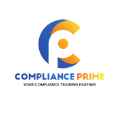If you own or manage rental property, one metric you should always keep an eye on is tenant turnover rate. This rate tells you how often tenants move out of your units within a given period, usually a year. Understanding your turnover rate is crucial because it directly impacts your rental income, operating costs, and even the long-term value of your property. But what’s considered a “good” tenant turnover rate? Let’s break it down.



What Is Tenant Turnover Rate?
Tenant turnover rate is the percentage of tenants who move out of your property over a specific time frame.
Formula:
Tenant Turnover Rate = (Number of Move-outs in a Year ÷ Total Number of Units) × 100
This gives you a quick snapshot of how stable your tenant base is.
To know more about whether a landlord can evict a tenant for damaging property, do read our in depth blog.
Example: A Clear Picture
Let’s say you manage an apartment building with 20 units. Over the course of a year, 5 tenants moved out.
If you manage an apartment building with 20 units, and 5 tenants move out over the course of a year:
Tenant Turnover Rate = (5 ÷ 20) × 100 = 25%
Now, whether 25% is “good” depends on your local rental market, but in general:
- A turnover rate of less than 30% is considered good and healthy.
- Rates above 50% often signal issues, either with the property, the management, or tenant satisfaction.
What Causes Low vs. High Turnover Rates?
Causes of Low Turnover (Good Sign)
- Competitive rent pricing
- Responsive and reliable property management
- Well-maintained property (repairs handled quickly, clean common areas)
- Amenities tenants actually use (parking, laundry, Wi-Fi, etc.)
- Building a strong landlord–tenant relationship
Causes of High Turnover (Warning Sign)
- Rent increases that outpace market trends
- Poor maintenance or delayed repairs
- Lack of communication or unprofessional management
- Safety concerns or neighborhood decline
- Unclear lease terms or frequent conflicts
Why Does Turnover Matter?
Every time a tenant leaves, you face hidden costs:
- Vacancy periods with no rental income
- Cleaning, repairs, and possible renovations
- Marketing expenses and agent fees
- Time and effort spent screening new tenants
Keeping turnover low isn’t just about avoiding hassle, it’s about protecting your bottom line.
To know more about whether Landlords Have to Clean Between Tenants , do read our in depth blog.
How to Improve Your Tenant Turnover Rate
If you’re seeing higher turnover than you’d like, here are a few strategies:
- Prioritize tenant experience: A prompt response to maintenance requests goes a long way.
- Be realistic with rent increases: Keep your pricing aligned with the local market.
- Offer lease renewal incentives: Even small perks, like a carpet cleaning or a rent freeze, can encourage tenants to stay.
- Communicate clearly: Set expectations upfront and keep communication open throughout the lease.
- Invest in the property: Modern appliances, updated fixtures, and good curb appeal make tenants feel at home.
Final Thoughts
A “good” tenant turnover rate is usually under 30%, but the real goal is consistency. If your property has stable, long-term tenants, you’ll save money and reduce headaches.
As a property manager or landlord, you can’t prevent all turnover, life changes, job relocations, and personal reasons will always play a role. But by focusing on tenant satisfaction and maintaining fair, transparent practices, you can keep your turnover rate at a healthy level and ensure your property remains profitable.
And if you want expert guidance, check out Compliance Prime’s fair housing webinars to keep your knowledge sharp and your properties protected.


